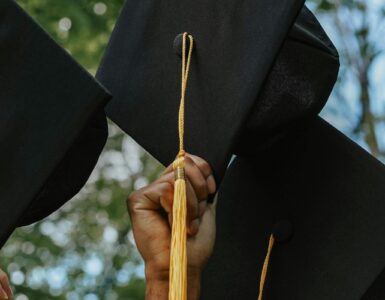Characteristics of Trump’s First Term
Trump’s second non-consecutive term means a clear pushing forth of agenda that he put forward in his term. This could mean more oversight on for-profit universities, lesser immigrant international students with constant crackdown on H1B Visa, and a defiant proclamation that every Chinese student in the US is a spy. Moreover, a clear restriction of access to students of Iran, Libya, Somalia, Syria, Yemen, North Korea, and Venezuela meant lesser chances for students from different cultures to have a viable future in leadership and more governmental areas.
Outlook on Universities
If Donald Trump secures a second term in the White House, expect more aggressive efforts to reshape the landscape of higher education. Trump has made clear his plans to reform college accreditation, aiming to eliminate what he perceives as ideological bias in academia. His administration would likely push for policies that penalize universities that do not take a strong stance against certain forms of campus speech—particularly pro-Palestinian demonstrations. He has also suggested that international students who participate in protests could face deportation. On top of these changes, Trump has floated the idea of a national online university, which would be funded by taxes on wealthy colleges, in a bid to challenge what he sees as “wokeness” in higher education.
While some of these proposals face significant hurdles, including needing congressional approval or updates to the Higher Education Act, they signal an administration likely to push for deeper changes to the way colleges and universities operate. If Republicans retain control of Congress, Trump would have a much clearer path to implementing his vision, which could include slashing funding for institutions or imposing bans on diversity, equity, and inclusion (DEI) initiatives.
Student Debt Eradication
Trump’s second term would also likely bring a shift in the nation’s approach to student debt. It is almost certain he will reverse President Biden’s initiatives aimed at easing student loan burdens, such as the new income-driven repayment plans and civil rights protections for transgender students in higher education. Trump has criticized Biden’s handling of student debt and, should he regain power, could take steps to roll back such reforms, making it harder for struggling borrowers to find relief. The fate of student loan forgiveness programs remains uncertain, as Trump’s administration could prioritize cuts to federal education funding instead of expanding debt relief.
LGBTQIA+ Student Reformation Slowdown
Trump has shown little sympathy for expanding rights and protections for LGBTQIA+ students. His first term saw moves to revoke protections for transgender students, and it is likely he would continue or even intensify these efforts in a second term. This could include restricting transgender athletes’ participation in college sports and revisiting policies that protect gender identity in education settings. Given the political climate, it’s expected that any progress made in the first term of Biden’s administration regarding LGBTQIA+ student rights could stall or be rolled back under Trump, creating a challenging environment for students advocating for expanded protections.
Dissolution of the Education Department
One of Trump’s more radical proposals is to dismantle the U.S. Department of Education entirely. He has suggested that authority over education should be returned to the states, a move that would significantly reduce federal oversight. Project 2025, a far-right blueprint linked to the Trump campaign, outlines how this could be achieved, but experts caution that this is a long-term and difficult goal. During his first term, Trump’s Education Secretary Betsy DeVos was a staunch advocate for reducing the department’s role, and if he returns to office, he could appoint an even more right-wing figure to lead the department. The dissolution of the Education Department could lead to a dramatic shift in how education policy is implemented across the country.
Conclusion
A second Trump presidency would likely bring about a series of changes to higher education that would have lasting impacts on universities, student debt, LGBTQIA+ student protections, and the role of the federal government in education. From reshaping college accreditation to dismantling the Education Department, Trump’s proposals reflect a desire to push higher education in a more conservative direction. While many of these proposals face significant obstacles, they reflect a broader push to challenge what Trump and his supporters see as a liberal bias in academia. If the political climate remains favorable, we could see a major reshaping of U.S. education policy, with significant consequences for students, faculty, and the institutions themselves.








